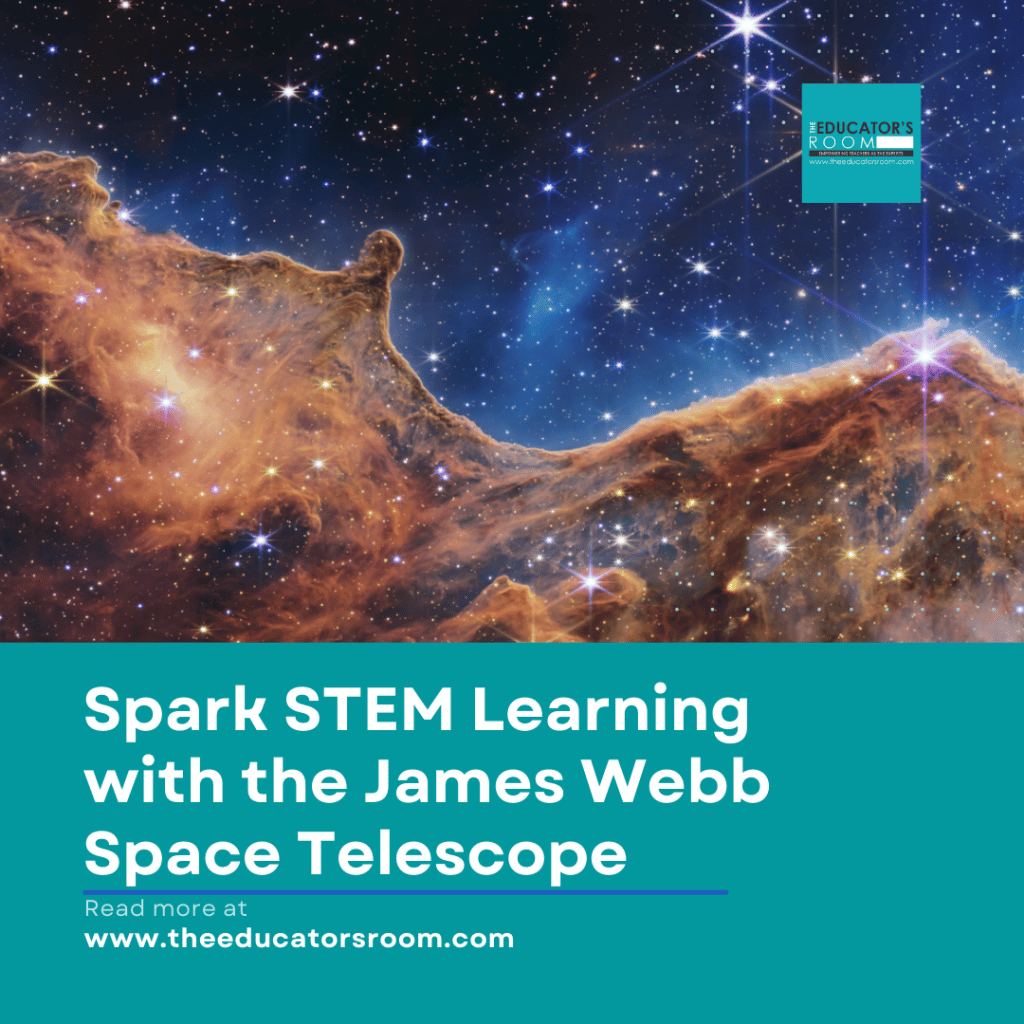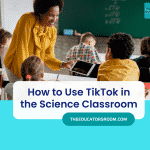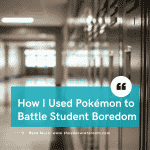Have you signed up for The Educator’s Room Daily Newsletter? Click here and support independent journalism!
Like millions around the world I was thrilled to see the first images of the James Webb Space Telescope. Images called the cosmic cliffs showed the birth of a star. I was amazed at the capabilities of this new telescope when reading NASA’s description “Webb’s images were approximately the size of a grain of sand at arms length, a tiny sliver of the vast universe.” I knew I needed to enhance my lessons to reflect the wonder I just experienced. But how could I use the phenomenon of the James Webb Space Telescope to promote STEM learning?
What’s Special About the James Webb Space Telescope?
Integrating the James Webb Space Telescope into lessons is a great way to enhance a STEM curriculum. According to NASA, “The James Webb Space Telescope is the world’s premier space science observatory.” It is an example of extraordinary innovation that took 30 years to build, with over 20,000 people from across the globe contributing to its successful launch on December 25, 2021. NASA, The Canadian Space Agency, and The European Space Agency worked collaboratively to make this infrared observatory that will now alter our understanding of the universe. Astronomers worldwide are anticipating the amazing discoveries that will unfold on this remarkable science mission.
The first pictures already displayed a spectacular view of how stars form, allowing astronomers to discover and study every phase of our universe. In addition, the Webb Telescope will act as a time machine, allowing scientists to see the first stars and galaxies formed 13.5 billion years ago. These discoveries will bring a wealth of opportunities for teachers to create STEM lessons that will launch student learning into the 21st Century.
How to Teach About the James Webb Space Telescope
The engineering of the James Webb Space Telescope is certainly complex, and NASA has provided a free James Webb Space Telescope toolkit for educators. This toolkit offers lesson plans, videos, and great hands-on activities that help students connect the content to real-world experiences. Through these hands-on activities, students can learn about the design of the telescope’s primary mirror. One of NASA’s activities is the space origami activity. It is modeled after a real telescope, with 18 hexagonal shapes which fold and unfold. Students learn why the hexagonal shape enables the primary mirror to be folded into the rocket like a drop-leaf table and unfolded in space like a “Transformer.”
Another great activity for learning about the mirror is using a 3-D printer. Using the MakerBot Sketch allows students to use the sketch software and make the hexagonal shapes to replicate the design of the primary mirror. Unfortunately, some schools may not have access to 3-D printers, and teachers will have to use their creativity and use hexagons from their math toolbox. Challenging students to work collaboratively and use the engineering design process to make a model of the primary mirror using yellow hexagons, gold foil, and black construction paper.
The telescope’s Sunshield provides another opportunity for learning through a hands-on activity. The telescope will be able to observe faint light from distant places. For that to happen, the infrared light must be extremely cold to operate. The Sunshield consists of five layers, and it separates the observatory into a warm side (facing the sun) and a cold side. In making a model, students learn the important job the Sunshield does in providing shade and protecting the telescope from the heat of the sun, Earth, and moon. The five layers system allows the heat to radiate out of each layer, and as you go down the layers, it gets cooler. Teachers can challenge students to make a model of the Sunshield with tin foil, saran wrap, and wood pegs. Using STEM to teach students about the most powerful telescope in the world will enhance and extend their learning.
Today’s Students are Tomorrow’s NASA Engineers
Using The James Webb Space Telescope as a teaching tool will enhance STEM lessons and foster innovation by building critical thinking, analysis, problem-solving, persistence, collaboration, and communication skills. As educators, it is important to build these skills early. They are the skills that all leaders need to be successful in today’s global world. In doing so, we can prepare today’s children to invent something as phenomenal as The James Webb Space Telescope in the future.
Editor’s Note: If you enjoyed this article, please become a Patreon supporter by clicking here.







